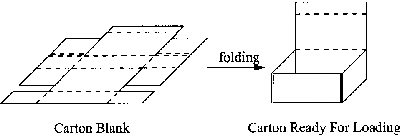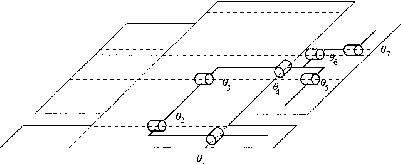
Next: Simplifying knots Up: 7.5 Folding Problems in Previous: 7.5 Folding Problems in
 |
 |
An interesting application of motion planning to the automated folding of boxes is presented in [661]. Figure 7.28 shows a carton in its original flat form and in its folded form. As shown in Figure 7.29, the problem can be modeled as a tree of bodies connected by revolute joints. Once this model has been formulated, many methods from Chapters 5 and 6 can be adapted for this problem. In [661], a planning algorithm optimized particularly for box folding is presented. It is an adaptation of an approximate cell decomposition algorithm developed for kinematic chains in [658]. Its complexity is exponential in the degrees of freedom of the carton, but it gives good performance on practical examples. One such solution that was found by motion planning is shown in Figure 7.30. To use these solutions in a factory, the manipulation problem has to be additionally considered. For example, as demonstrated in [661], a manipulator arm robot can be used in combination with a well-designed set of fixtures. The fixtures help hold the carton in place while the manipulator applies pressure in the right places, which yields the required folds. Since the feasibility with fixtures depends on the particular folding path, the planning algorithm generates all possible distinct paths from the initial configuration (at which the box is completely unfolded).
Steven M LaValle 2020-08-14